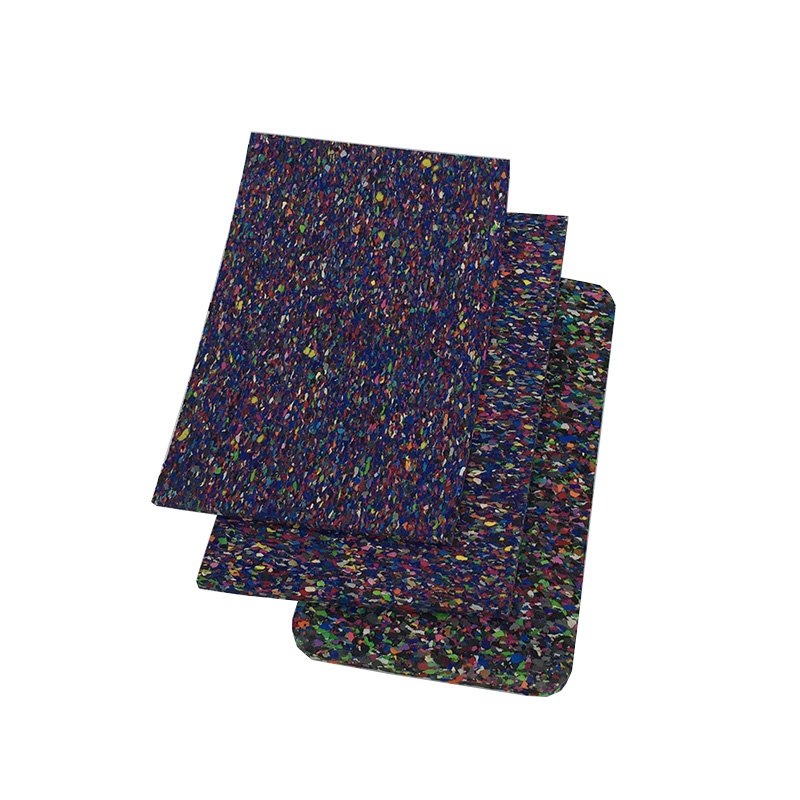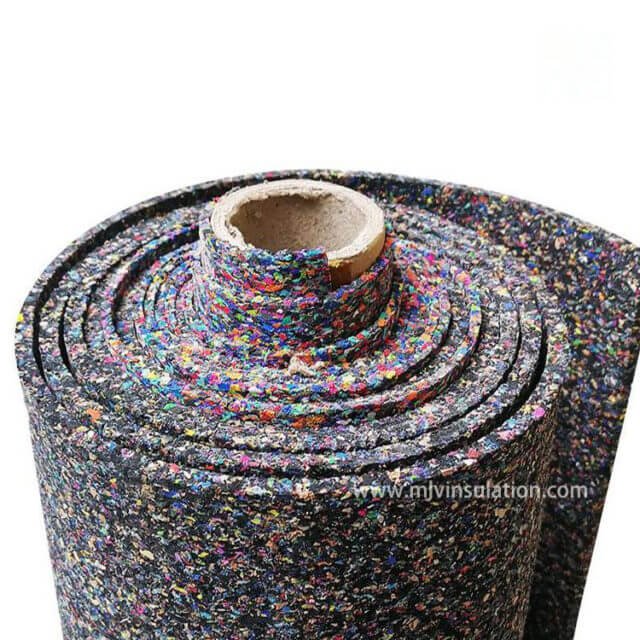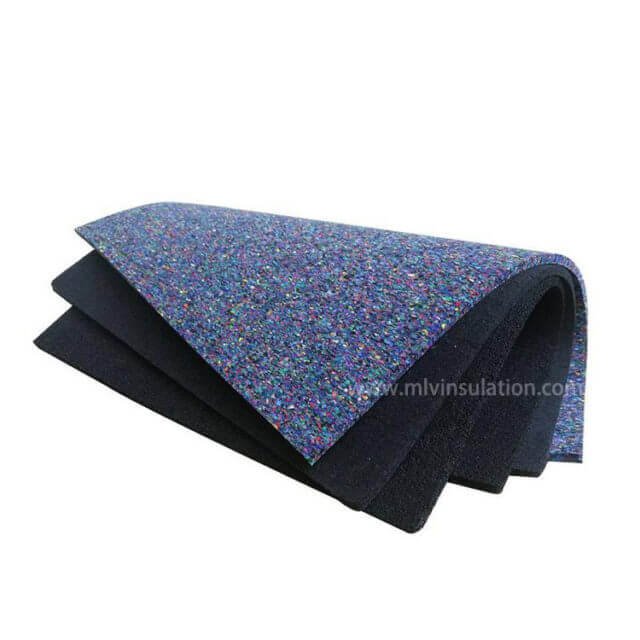I. Introduction
II. Understanding Sound Insulation for Floors
III. Different Types of Sound Insulation for Floors
A. Mass Loaded Vinyl (MLV)
B. Other Sound Insulation Options
IV. Best Practices for Sound Insulation in Gym Floors
V. Compliance with Building Regulations
VI. Additional Tips for Effective Sound Insulation
VII. Conclusion
I. Introduction
At gym floors, sound insulation plays a key role in creating an inviting and conducive atmosphere for workouts. Not only does it contribute to noise control and impact absorption, ensuring comfort and safety of gym-goers; in this blog post we’ll examine its significance for gym floors as well as explore its many benefits.

II. Understanding Sound Insulation for Floors
Sound insulation (also referred to as soundproofing or sound reduction) refers to the process of limiting sound transmission between areas. When applied to gym floors, sound insulation involves taking measures to minimize noise transfer between exercise zones and surrounding spaces. By properly insulating floors for sound, you can create a more peaceful and tranquil gym atmosphere.
Sound insulation’s performance depends on numerous factors. Chief among them are the materials chosen for insulation – choosing high quality mass loaded vinyl (MLV) can greatly enhance noise control’s effectiveness. Furthermore, construction design and thickness can have an impact on sound transmission rates.
Sound insulation solutions must take into account the specific requirements of gym floors when installing soundproofing solutions. Gyms tend to experience heavy foot traffic, heavy equipment usage and intense workouts that increase noise levels – therefore the sound insulation for floors solution must be robust enough to deal with these unique challenges and achieve maximum noise reduction.
Next, we will examine various types of sound insulation suitable for gym floors, with particular attention being paid to mass loaded vinyl (MLV) products.

III. Overview of Sound Insulation Materials for Floors
A. Mass Loaded Vinyl (MLV)
Mass Loaded Vinyl (MLV) is an ideal material to install under gym flooring materials to provide sound insulation and noise reduction. As it contains high mass per unit area, MLV effectively blocks and absorbs sound waves – an integral feature in providing effective noise control. MLV is often installed directly beneath flooring material to maximize soundproofing capabilities.
MLV works by adding mass to a floor surface, helping reduce airborne and impact noise levels. Its dense composition works to dampen vibrations and prevent sound waves from traveling through its structure – making MLV an excellent solution for gym floors and sound insulation between floors flats where impact noise from weights or exercise equipment could otherwise become an issue.
MLV soundproof insulation for floors has several advantages, including:
- Superior soundproofing capabilities: MLV sound proof insulation for floors offers unparalleled soundproofing capabilities. Their efficient noise reduction solutions reduce both airborne and impact noise to provide gym users with a quieter environment while limiting any disturbances from neighboring spaces.
- Easy Installation: MLV soundproofing insulation for floors comes in rolls or sheets for simple installation over existing floors or under new flooring materials, making it simple and quick. Cut to size using adhesive or mechanical fasteners, it can also be adhered directly to the floor surface for adhesion purposes.
- Versatility: MLV sound insulation for wooden floors can be used with various types of gym flooring, including hardwood, laminate or carpeted surfaces. It provides sound insulation without altering the aesthetics of your space.

B. Acoustic Underlay and Other Sound Insulation Options
Is MLV the best sound insulation for floors? What is the best insulation for soundproofing between floors? Additionally to MLV, gym sound proof insulation between floors offers other sound insulation options. Acoustic underlay is one of the more commonly chosen solutions and should be installed beneath flooring materials to provide additional sound absorption and impact resistance, creating a quieter and more relaxing environment. Many people consider it the best sound insulation between floors.
Foam or rubber-based insulation materials provide another method for soundproofing, designed to absorb sound waves and reduce vibrations to further minimize noise transmission.
When selecting insulation for sound between floors, it is crucial to take several factors into account such as flooring material type, desired noise reduction level and any building regulations or guidelines that must be observed.

IV. Best Practices for Sound Insulation in Gym Floors
A. Pre-installation Prep Work
Prior to installing insulation between floors for sound, it is crucial that an evaluation be undertaken of their existing structure and condition. Some tips for pre-installation preparations include:
- Inspect the floor for any damage or structural issues that may need to be addressed before installation.
- Ensure that the subfloor is clean, level, and free from any debris or obstructions.
- Address any moisture or humidity issues that can affect the performance of sound insulation materials.
B. Selecting Appropriate Sound Insulation Products
Consider these key aspects when purchasing underfloor sound insulation products for gym floors:
- Noise Reducing Capabilities: For efficient noise reduction, choose materials with proven soundproofing properties that can efficiently reduce both airborne and impact noise levels.
- Compatibility with flooring materials: When choosing sound insulation for timber floors products for use in gym environments, make sure they’re compatible with the type of flooring material being used.
- Durability and longevity: Choose sound deadening insulation between floors products that are resilient and can withstand the demands of a gym environment.
Consult sound insulation experts or manufacturers in order to locate products that best meet your gym floor soundproofing and sound insulation for floors in flats needs.
Next, we will outline additional best practices for sound insulation on gym floors, such as installation techniques and compliance with building regulations.

V. Compliance with Building Regulations
Adherence to applicable building codes and regulations is of the utmost importance when installing sound insulation for gym floors. Building regulations exist to safeguard occupants’ wellbeing while minimising noise disturbance to neighboring spaces, so observing such laws is critical in creating an ideal atmosphere for both users and surrounding areas.
Common building regulations sound insulation between floors may include:
- Sound Transmission Class (STC) requirements: Sound Transmission Class (STC) measures how effectively materials or assemblies reduce airborne sound transmission, with building codes often specifying minimum STC ratings for walls and floors to reduce noise transference.
- Impact Insulation Class (IIC) requirements: IIC measures the ability of floor assemblies to reduce impact sound transmission from footsteps or dropped objects, such as footsteps or dropped weights. Compliance with specific IIC ratings may be necessary to minimize disturbances caused by impact noise.
- Fire safety regulations: For optimal performance in any environment, it is imperative that sound insulation materials used conform with fire safety standards.
Consulting professionals familiar with local building codes and regulations is key to ensuring your gym floor sound insulation complies with their specifications.

Soundproof Mats for Walls | Soundproof Materials
Soundproof Materials for Walls Thin Sound Proof Material |Sound Blocking Material for Walls Sound Proofing Mats Soundproof Material for Walls

Sound Insulation Roll | Sound Proof Insulation Rolls
Mass Loaded Vinyl Cheap Sound Proof Insulation Rolls | Flexible Insulation Roll Mass-Loaded Vinyl Sound Insulation Rolls for Walls
VI. Additional Tips for Effective Sound Insulation
Additional sound insulation materials for floors and measures may help increase soundproofing on gym floors. Here are a few suggestions:
- Acoustic Underlayment: Installing an 5mm rubber underlayment under gym flooring can provide extra sound absorption and impact resistance, further reducing noise transmission and improving flooring sound insulation underlayment performance.
- Employ area rugs or mats: Utilizing area rugs or mats in certain parts of a gym can help absorb sound and minimize noise reflection, especially where heavy weights are dropped or high-impact activities occur. This approach may prove especially useful.
- Annual Maintenance and Inspect: To maintain optimal sound insulation for laminate floors performance, routinely inspect floor sound insulation systems and gym floors to ensure they remain in top shape. Any signs of wear or damage must be addressed quickly in order to preserve optimal sound insulation performance.
By applying these additional tips and ensuring proper maintenance of gym floors, you can increase their sound insulation effectiveness while creating a more pleasant environment for gym users.
Next, we will bring this blog post full circle by outlining its key points and emphasizing their importance in sound insulation for gym floors.

Mass Loaded Vinyl for Walls | Mass Load Vinyl Sheet
Mass Loaded Vinyl Existing Wall |Mass Loaded Vinyl on Wall Mass Loaded Vinyl Over Drywall Size 1x5m 1x10m Roll

Acoustic Floor Insulation Materials | Noise Insulation for Floors
Noise Insulation for Floors Rubber Floor Insulation Roll | Acoustic Insulation Between Floors Sound Insulation Floor Mats 5 mm Resilient Aco
VII. Conclusion
In this blog post, we have explored the importance and benefits of sound reducing insulation between floors for gym floors. Here is an overview:
- Noise Control: Gyms can be lively places filled with activities, which can lead to excessive noise levels that are disruptive and unpleasant for users and nearby areas alike. Implementing sound insulation flooring underlay measures can effectively lower noise levels for more comfort in these spaces.
- Impact Absorption Gym floors are subject to heavy foot traffic, equipment use and intense workouts which result in significant impact forces that must be dissipated safely or they could result in discomfort, fatigue or injuries for users and athletes. Compared to sound insulation board for floors, mass Loaded Vinyl (MLV) insulation materials and Acoustic underlay have better impact absorption properties to alleviate such strain on users’ joints and muscles.
Sound insulation for gym floors is essential to noise control and impact absorption, enhancing user experience while simultaneously protecting users and preventing injury. By investing in acoustic insulation for floors and other soundproofing measures, gym owners can create an enjoyable space for their users while being considerate to neighbors in their community.










